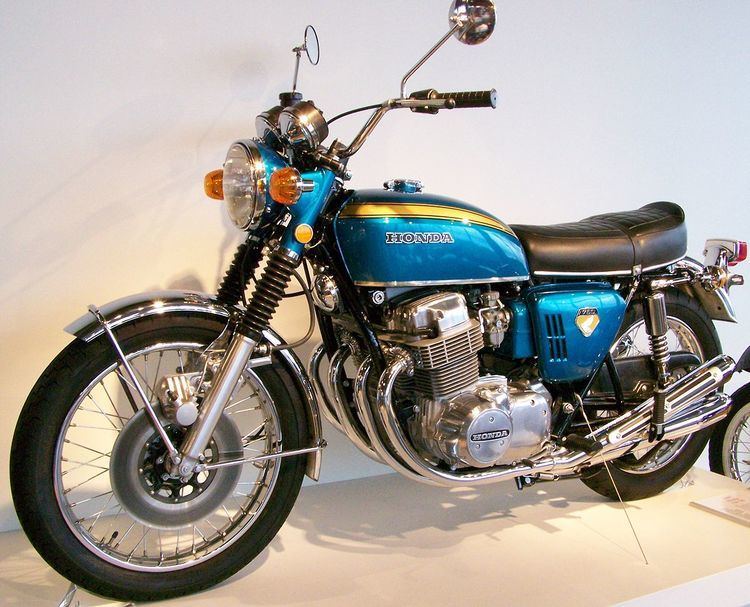 | ||
The term "Universal Japanese Motorcycle", or UJM, is a term coined in the mid-1970s by Cycle Magazine to describe a proliferation of similar Japanese standard motorcycles that became commonplace following Honda's 1969 introduction of its successful CB750. The CB750 became a rough template for subsequent designs from all three of the other major Japanese motorcycle manufacturers. In 2011, the New York Times said lightning struck for Honda "with the 1969 CB 750, whose use of an inline 4-cylinder engine came to define the Universal Japanese Motorcycle."
The UJM template featured a four-cylinder engine, standard riding position, carburetor for each cylinder, unit construction engine, disc front brake, conventional tubular cradle frame and telescopic front forks and twin-shock rear suspension. As the major Japanese motorcycle manufacturers, Honda, Kawasaki, Suzuki, and Yamaha, began replicating each other's designs, the UJM's created a homogeneity of form, function and quality. UJMs included such prominent models as the Honda CB500, the Kawasaki Z1, and the Suzuki GS750. Such machines had massive sales, and UJMs continued to be produced for more than a decade.
In 1976, Cycle described the new phenomenon, saying:
In the 2010 book, Sport Bikes, Hans Hetrick wrote that "throughout the 1970s, the Japanese companies experimented with different types of engines and frame designs. Their ideas soon came together in a rock-solid package. This design became known as the Universal Japanese Motorcycle, or UJM."
Subsequently, in the 1980s and 1990s, the Japanese manufacturers diversified their ranges, producing faired sportsbikes, race-replicas, dual-sport bikes and muscle bikes.
Contemporary UJMs
A market revival has led Japanese manufacturers to introduce modern interpretations of the UJM, including Honda's 2010 CB1100.
When Suzuki introduced its TU250X in 2009 to the US market, author Pete Brissette of Motorcycle.com wrote that Suzuki had "returned to the simple formula of the UJM, and with it brought back the pleasures of riding a friendly, straightforward motorcycle". And when its Bandit has been back for 2015, author Sean MacDonald wrote: "The Bandit 1250S really is one of the last of the UJMs."
Yamaha subsequently reintroduced their SR400 to the North American and Australian market, whereas ″Kawasaki's range of modern classics is set to complete its full circle in 2017″.
